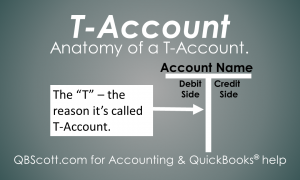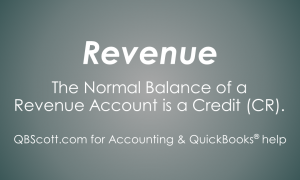Posts Tagged ‘Credit’
T-Account Example
For the image below, total Debits less total Credits equal the Account Balance. So, in the example in the image, total Debits of 2,675 less total Credits of 275 equal 2,400. This is a Debit amount since, in this example, Debits are greater than Credits.
Read MoreWhat T-Accounts do
All Debits and Credits are tracked in an Account’s T-Account. When tracked properly, it’s easy to figure out the balance of an account.
Read MoreHow T-Accounts help
Each Account has it’s own T-Account. This allows proper transaction tracking of Debits and Credits.
Read MoreAnatomy of a T-Account
A T-Account visually represents the impact transactions have on a particular account. As seen in the image, the white “T” allows space for an Account Name (at the top), Debit Side (Left), and Credit Side (Right). It’s a simple visual that helps when trying to understand the balance of an account.
Read MoreNormal Balance: Revenue
The normal balance of a Revenue Account is a Credit. So, if you earned $750 from selling widgets (Sales), it means you have a $750 Credit in the Sales account.
Read MoreNormal Balance: Owners’ Equity
Like Liability Accounts, the normal balance of an Owners’ Equity Account is a Credit. So, if you have $250 in Retained Earnings, it means you have a $250 Credit in the Retained Earnings account.
Read MoreNormal Balance: Liabilities
The normal balance of a Liability Account is a Credit. So, if you owed $750 to someone in the form of a Notes Payable, it means you have a $750 Credit in the Notes Payable account.
Read MoreDebits = Credits
Debits must always equal Credits. On every transaction the total of the Debits must equal the total of the Credits. In some transactions you may have more than one Debit and only one Credit. Or you may have one Debit and more than one Credit. Regardless the total value of Debits must equal the total…
Read MoreWhat’s a Journal Entry?
The Journal Entry is used to record a transaction. It must include at least one Debit and least one Credit. The Debits and the Credits in the Journal Entry must equal. Journal Entries are used all throughout accounting.
Read MoreCredits (CR)
Credits are the opposite of Debits. Credit increase Liabilities, Equity Accounts, and Revenue Accounts. They also decrease Assets and Expense Accounts.
Read More









